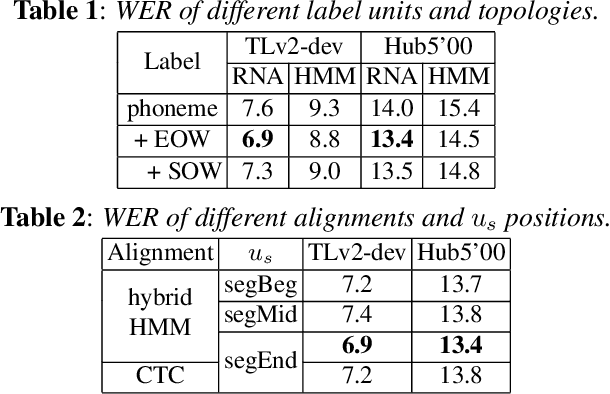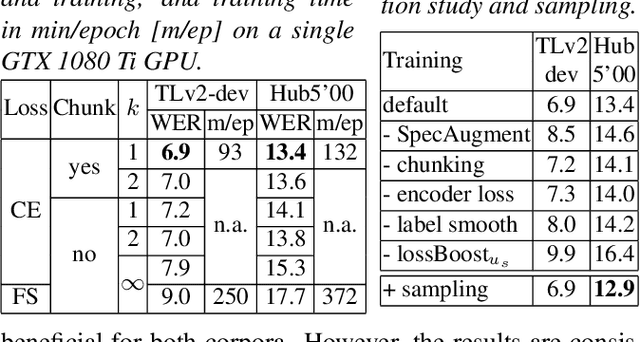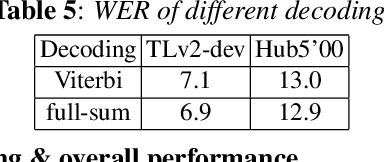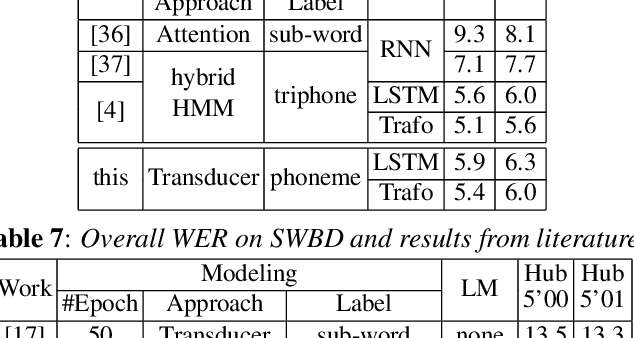Phoneme Based Neural Transducer for Large Vocabulary Speech Recognition
Paper and Code
Nov 09, 2020



To join the advantages of classical and end-to-end approaches for speech recognition, we present a simple, novel and competitive approach for phoneme-based neural transducer modeling. Different alignment label topologies are compared and word-end-based phoneme label augmentation is proposed to improve performance. Utilizing the local dependency of phonemes, we adopt a simplified neural network structure and a straightforward integration with the external word-level language model to preserve the consistency of seq-to-seq modeling. We also present a simple, stable and efficient training procedure using frame-wise cross-entropy loss. A phonetic context size of one is shown to be sufficient for the best performance. A simplified scheduled sampling approach is applied for further improvement. We also briefly compare different decoding approaches. The overall performance of our best model is comparable to state-of-the-art results for the TED-LIUM Release 2 and Switchboard corpora.
 Add to Chrome
Add to Chrome Add to Firefox
Add to Firefox Add to Edge
Add to Edge